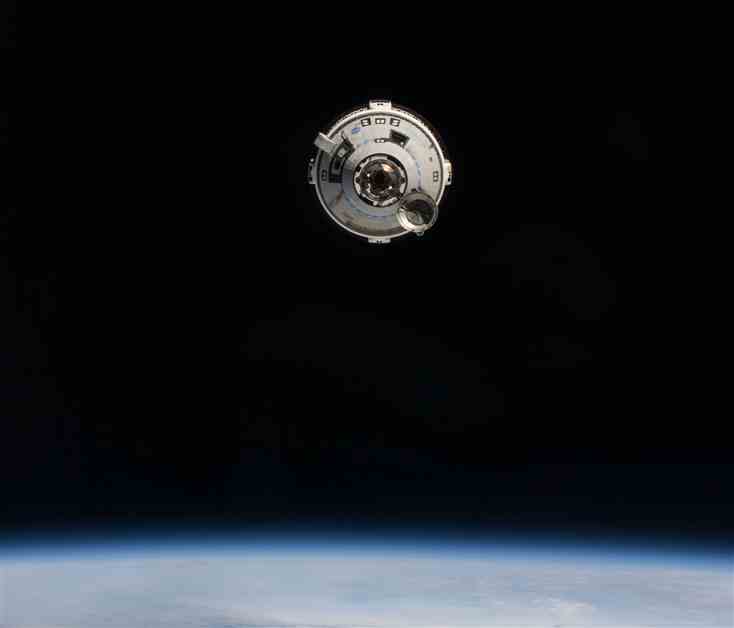NASA has reported that Boeing’s CST-100 Starliner spacecraft has encountered a fifth helium leak in its propulsion system. Despite being minor, the leak poses a challenge as engineers prepare the spacecraft for its return to Earth in the upcoming week.
In a recent statement on June 10, NASA acknowledged that the spacecraft team is assessing the impact of five small leaks in the service module helium manifolds on the rest of the mission. The detection of these leaks came after NASA had initially mentioned only four leaks in a briefing following the spacecraft’s docking with the International Space Station on June 6.
NASA spokesperson Josh Finch revealed that the fifth leak was detected around the time of the post-docking briefing. This leak is notably smaller than the others, registering at 1.7 psi per minute. The first leak was identified prior to Starliner’s launch on June 5, which was shortly after a scrubbed launch attempt on May 6. NASA and Boeing officials initially considered this leak to be an isolated incident likely caused by a seal defect. However, additional leaks were detected post-launch, with one being significantly larger at 395 psi per minute.
Following the docking, a fourth leak was discovered but was relatively minor at 7.5 psi per minute. Despite closing the helium manifolds to prevent leaks, they will need to be reopened to utilize the spacecraft’s thrusters for undocking and deorbit maneuvers. NASA has estimated that Starliner has sufficient helium for 70 hours of flight operations, while only seven hours are required for the return journey to Earth.
In addition to the helium leaks, engineers are investigating a reaction control system (RCS) thruster that malfunctioned during Starliner’s flight to the ISS. Furthermore, an RCS oxidizer isolation valve in the service module remains improperly closed. Collaborative efforts between the commercial crew program, Boeing, and ISS teams are ongoing to strategize for a successful undocking and reentry.
NASA had initially planned an undocking for June 14 but postponed it to at least June 18 to avoid overlapping with an ISS spacewalk on June 13. This delay was intended to ensure a smoother operational sequence, considering undocking opportunities governed by orbital mechanics.
NASA astronauts Butch Wilmore and Suni Williams, who piloted Starliner to the ISS, have been actively engaged in testing the spacecraft and conducting science experiments aboard the station. Their positive feedback on Starliner’s performance has been encouraging, with Wilmore commending the spacecraft’s precision during maneuvers.
Boeing’s vice president and commercial crew program manager, Mark Nappi, expressed enthusiasm about the astronauts’ positive experience onboard Starliner and looks forward to leveraging their feedback and flight data for further enhancements to the spacecraft.
















